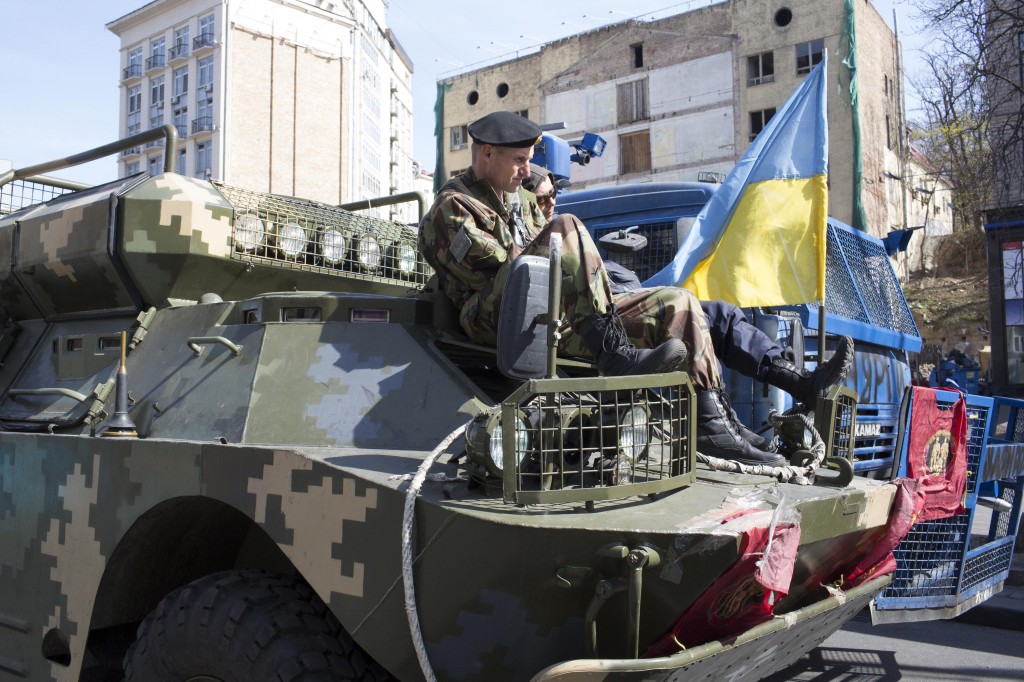Q&A on Ukraine: After Losing Crimea to Russia, What Next?
Amy Payne /
Russia essentially took over part of Ukraine and still reportedly has troops along the country’s border. We asked Heritage’s Margaret Thatcher Fellow, Luke Coffey, what the situation is like and what the U.S. should be doing.
The Foundry: So Crimea voted to leave Ukraine and become part of Russia again. Was that the end of the story?
Luke Coffey: Not exactly. Russia still has forces massed on the border with Ukraine. Although the exact number is unknown, some estimates place the number of Russian troops as high as 80,000. Russian president Vladimir Putin recently said that some Russian units on the border have been removed, but NATO disputes this. Right now, the U.S. and its partners in the region are keeping a very close eye on the situation.
Are Ukrainians in danger?
Well, for those Ukrainians living in Crimea who do not wish to see their home become part of Russia, it must be a frightening, if not uncertain, time. For Ukrainians living in the rest of the country, there is a serious concern that Russia might invade and annex provinces in eastern Ukraine, which has a sizable ethnically Russian population.
Putin will have to decide if the juice would be worth the squeeze. The Russian Army performed poorly during its 2008 invasion of Georgia, and invading the whole of the Ukraine—or even part of the country—would be a major military challenge for Moscow. The international community needs to make the price of a Russian invasion so high for Putin that he will be deterred because it wouldn’t be worth the costs. It remains to be seen whether the West has this level of resolve.
What is the U.S. doing?
Congress passed a bill to send aid to Ukraine this week after a lot of back and forth between Democrats and Republicans on issues not directly related to the crisis in Ukraine—like International Monetary Fund reform, for example. Finally, Congress decided to do the right thing and pass a Ukraine aid bill focused solely on the crisis at hand.
What kind of aid are we sending? Does it include military support?
Right now the U.S. is sending limited direct foreign aid and no military aid of any substance. The U.S. has several military options available that do not include the immediate deployment of American forces into Ukraine. Should the situation take a turn for the worse and Russia move to annex more of Ukraine, the U.S. military and its allies have the ability to help organize, train, and support Ukrainian forces. But this type of effort takes planning to be effective. Supplies, equipment, or weapons should be sent only with some measure of confidence that the materials would help stabilize Ukraine’s situation—and not simply fall into Russia’s hands or those of Russian loyalists.
Is there more the U.S. should be doing?
From the White House, we have heard a lot of talk but seen little action. Both President Obama and Vice President Biden have made trips to Europe in an effort to reassure our allies, but for the most part the rhetoric hasn’t been matched with reality. For example, Biden suggested that the U.S. might participate in more military training exercises with allies—but these have actually been reduced by 45 percent due to defense cuts. There have been limited and targeted sanctions placed on key Russian individuals involved in Russia’s annexation of Crimea, but this has been the extent of it. While this has been welcome, there is a feeling that more can be done.
Since many countries (including the U.S.) are saying they don’t recognize Russia’s actions as legitimate, what does that mean for Crimea and its people?
It is important to point out that the referendum that took place in Crimea on March 26 was illegal and was not recognized by the U.S., NATO, the G-7, or regional neighbors like Turkey, among others. For the West, the Russian annexation of Crimea changes the norms of European behavior tacitly agreed to since the end of the Cold War.
Many countries in the West have made it clear that they will not recognize Russian control over Crimea. But as far as the Russians are concerned, it is the end of the story—for Crimea, anyway. However, one aspect to watch is what the Crimean Tatars do. The Crimean Tatars are a Muslim minority group that accounts for about 12 percent of Crimea’s population and was persecuted by the Soviet Union. The Tatar community has yet to decide if they will resist the Russian annexation of Crimea or not. What they decide in the coming weeks could make things difficult for Moscow.
LEARN MORE: If Russia Attacks: How the U.S. Should Respond to Further Aggression Against Ukraine

